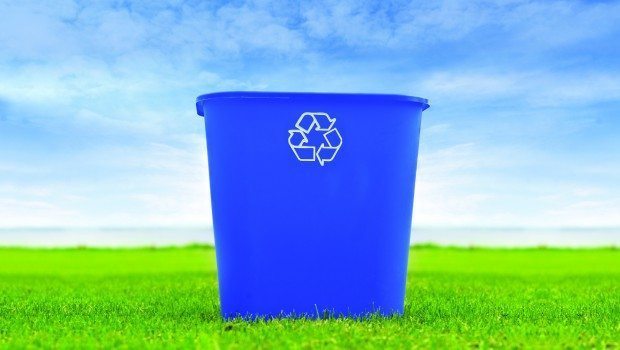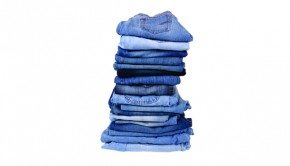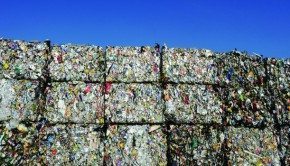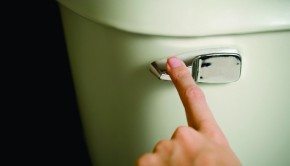Recylcling Everyday Refuse
What Happens after the Blue Bin is Emptied
Each blue recycle bin filled with plastic, aluminum, glass, paper and cardboard helps the environment, because it reduces landfill, takes less energy to repurpose materials than to make new ones and gently reminds us that thoughtful consumption is healthier for people and the planet. But what do all those recyclables turn into?
Repurposed Plastics
Plastic milk jugs turn into colorful playthings at Green Toys, of Mill Valley, California. Repurposing one pound of recycled milk jugs instead of making new plastic saves enough energy to run a computer for a month. All packaging is made from recycled content and printed with soy ink, so it can go into the blue bin again. GreenToys.com’s online counter shows the number of containers recycled—more than 10 million to date.
Fila Golf’s Principal Designer Nancy Robitaille says, “Recycled PET (polyethylene terephthalate), a core Fila cooling fabric, is used throughout our collection. Each fully recycled PET garment reuses about two-and-a-half 20-ounce plastic pop bottles.”
Patagonia customers are encouraged to return their old coat when buying a new one. Coats in good condition are given to people in need; the PET fleece lining from retired coats is sent to ReFleece, in Somerville, Massachusetts, where it is cleaned and turned into recyclable protective cases for iPads, e-readers and cell phones.
“We expect to make 10,000 cases this year from 2,000 jackets,” says Jennifer Fellers, ReFleece’s CEO. “We use low heat to press the cases into shape.”
Vancouver, Canada, which plans to be the greenest city in the world by 2020, includes recycled plastic from bags and water bottles in laying down warm asphalt mix for roads because it uses less fuel to keep the tar at a pourable temperature. Switching from traditional hot asphalt technology also reduces emissions.
Transforming Aluminum and Glass
In 2012, Do Something.org partnered with Alcoa to challenge teens to recycle aluminum cans. For every 50 cans collected during a two-month period, they were awarded a chance to win a $5,000 scholarship. The sponsors note that recycling one can saves enough energy to light a 100-watt bulb for 20 hours. The final total was 1,152,569 cans kept out of landfills.
“Aluminum can be recycled an infinite number of times,” says Beth Schmitt, director of recycling programs for Alcoa, which has centers nationwide and cash-back programs for community fundraisers. “We re-melt the collected cans, then roll out coils of new can sheets. This process can be repeated without any loss of strength—that’s why we call aluminum the ‘miracle metal.’ If every American recycled just one more can per week, we would remove 17 billion cans from landfills each year.”
Wine bottles become designer drinking glasses at Rolf Glass, in Mount Pleasant, Pennsylvania. “Our designs give used bottles a second life,” says owner Rolf Poeting. Refresh Glass, of Phoenix, Arizona, salvages and preps the bottles. “Then, our glass cutting and diamond-wheel engraving technology transforms them into sophisticated Glacier Glass,” continues Poeting. “This seems to be a trend in many industries, to find additional uses for another company’s recycled products.”
Rewined, of Charleston, South Carolina, also exemplifies this principle. It uses wine bottles to hold their soy-based, cotton-wicked candles, which provide 60 to 80 hours of wine-scented burn.
Second Life for Paper
Purina’s Yesterday’s News and Second Nature litter for cats and dogs, respectively, is made from recycled paper and absorbs waste upward from the bottom of the litter box for easier cleaning. The unscented litter pellets are three times as absorbent as clay, non-toxic and nearly dust-free. Hedgehogs, mice, gerbils, hamsters, guinea pigs and reptiles also like Yesterday’s News for bedding. On average, 44 million pounds of paper are annually recycled for these products.
According to the Environmental Protection Agency, the United States annually generates 11 million tons of asphalt shingle waste, mostly from re-roofing tear-offs and new installation scrap, comprising 8 percent of construction waste. Each recycled ton saves a barrel of oil. OFIC North America, of Fredericksburg, Virginia, creates its Ondura corrugated roofing from old newspapers or magazines and cardboard, made durable by infusing it with asphalt. It’s placed atop existing roofs, which means no discarded shingles. Each day, 40 to 50 tons of recycled paper goods find new life in Ondura products, available at most home improvement stores.
Sound inside Buick Lacrosse and Verano vehicles is dampened via a ceiling material made partly from reused cardboard shipping boxes. Paint sludge from General Motors’ Lansing, Michigan, Grand River assembly plant becomes durable plastic shipping containers for Chevrolet Volt and Cruze engine components. Some 200 miles of absorbent polypropylene sleeves, used to soak up a recent oil spill in the Gulf of Mexico, were converted into air deflectors for the Volt, preventing 212,500 pounds of waste from entering landfills.
As part of its community outreach, 250 shipping crates from GM’s Orion assembly plant became raised garden beds for a Southwest Detroit community garden. A local entrepreneur turned donated sound absorption material into coats that also serve as sleeping bags for the homeless.
Old Tires Transformed
The Rubber Manufacturers Association reports that Americans discard 300 million tires each year, each one having consumed about seven gallons of oil in its manufacture and poised to add to Earth’s landfills. Lehigh Technologies’ micronized rubber powder (MRP), made by freeze-drying discarded tires and pulverizing them into a fine powder, changes the equation. MRP is now used in many items, from new tires, roads and building materials to shoes.
It feels good to place used items in the blue bin instead of the trash, knowing that more and more companies are helping to put these resources to good use.




























